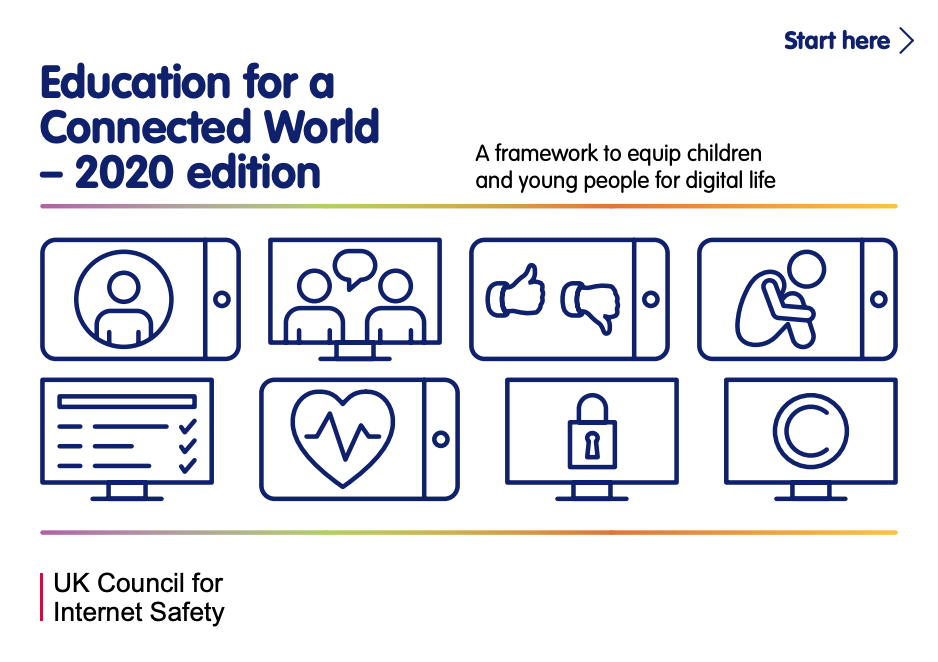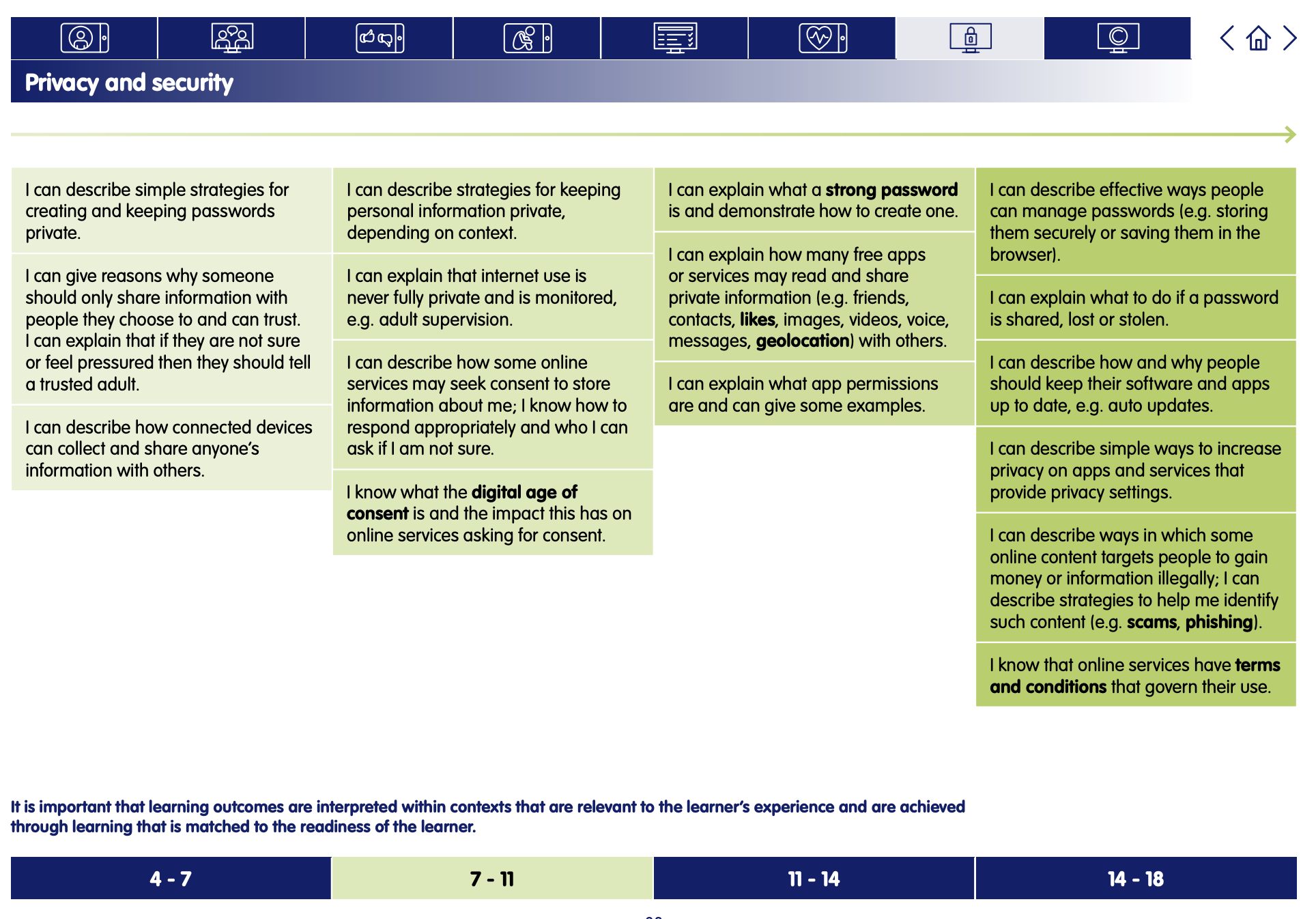That’s Private
Digital Literacy and Online Safety (Y3) - Lesson 2
A note about this lesson

This lesson is taken from Common Sense Education’s excellent Digital Citizenship curriculum. Their resources are shared for free under A Creative Commons Attribution- NonCommercial- NoDerivatives 4.0 International License.
You can find the original resources HERE.
Objectives
- Recognise the kind of information that is private.
- Understand that they should never give out private information online.
Lesson 1 - Device-Free Moments
Lesson 2 - That's Private
Lesson 3 - Digital Trails
Lesson 4 - Who's In Your Online Community?
Lesson 5 - Putting a STOP to Online Meanness
Lesson 6 - Let's Give Credit
Links to Education for a Connected World.
This lesson from Common Sense Media's Digital Citizenship curriculum links to the following strands from the Privacy and Security section of the Education for a Connected World framework.
Introduction - What is Private?
Staying safe online is a lot like staying safe in the real world. By helping a Digital Citizen sign up for a new app, students learn about the kinds of information they should keep to themselves when they use the internet -- just as they would with a stranger in person.
Ask: What kinds of things should we not tell a stranger? (Slide 3)
Invite students to respond. Answers may vary, but highlight things like address, phone number, full name, etc.
Say: It is important for you to keep certain information about yourself, like your address and phone number, private from strangers.
Project Slide 4 and define private as something that you should keep to yourself. It should only be shared with people you trust, like your parents or teacher.
Explain that private information is often connected to a specific person. For example, no two people in the class have the same full name and phone number.
Invite students to give examples of information that they should keep private. Write down their responses on Slide 5 or on chart paper so that you can return to them later in the lesson. Make sure to cover the following:
- Picture
- Full name
- Age
- Birth date
- Address
- Telephone number
- Email address (or parents' email address)
- Passwords
- Where they go to school or after school
- Parents' full names
- Where their parents work
- Parents' credit card or bank account number
Ask: Why do you think it's important to keep this information private?
Invite students to respond. Reinforce that it is never safe to give out private information to people they don't know since it can be used to trick them or put them in unsafe situations. Explain that they should always ask a parent or caregiver before they give out private information to anyone. This applies to people they don't know in the physical world and people online.
Ask: How is sharing private information online the same as telling it to a stranger in person?
Invite students to respond. Make sure students understand that when they share information online, it can be viewed by people they don't know. Project Slide 6 and define online as using a computer, phone, or tablet to visit a website or app.
Online Forms
Say: Let's play a quick game of thumbs up, thumbs down to make sure we know what is considered private information and what isn't. For each example I give, think about if it is OK to share (thumbs up) or if it is something private that you shouldn't share (thumbs down) with a stranger. (Slide 7)
- Your favourite ice cream flavour (thumbs up)
- What you ate for dinner last night (thumbs up)
- Your home address (thumbs down)
- Your best friend's favourite movie (thumbs up)
- Your parent’s phone number (thumbs down)
- Your password (thumbs down)
Distribute the Keep It Private Student Handout.
Say: There's a new app called SongTube that allows you to create your own music. Guts, one of the Digital Citizens, has permission to use the app, but is being asked to fill out a form first. Guts needs your help in figuring out what's OK to share. As you review the form, complete the sections that don't ask for private information and draw an X through the sections that do ask for private information. (Slide 8).
Allow students time to complete the form and then invite them to share out their answers, emphasising the sections that were asking for private information (Teacher Version).
Ask: Have any of you seen a form like this when visiting a website or app? Why do you think websites and apps ask for this type of information? Take turns sharing with your partner.
Invite students to share out. Explain that some reasons include: to learn more about the people who use their app, to send messages to people who are signing up, to sell things to those who sign up.
Emphasise that students should never fill out forms like this on their own, unless they have permission from a parent or caregiver.
Plenary - Pause and Think Moment
Say: Today we talked about what information is private and why we shouldn't share it online. Now let's reflect on what we learned. First, I'd like you to turn to your partner and share something about yourself that you don't think your partner knows about you, but that is not considered private information.
Direct students to page two of the Keep It Private Student Handout. Read the directions and allow students to complete the reflection independently. (Slide 9)
Invite students to share their reflections with the class. Collect the handouts to assess student learning.
Send home the Family Activity and Family Tips.


